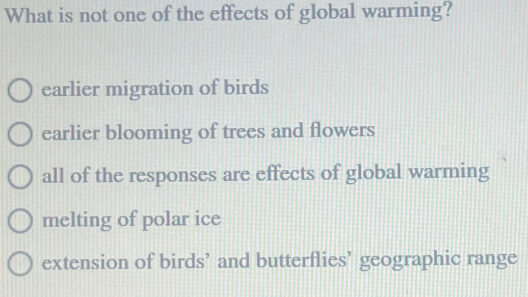Global warming stands as one of the most formidable challenges facing humanity today. Its ramifications are far-reaching, influencing not only the biosphere but also human socio-economic structures. However, through a collective and concerted effort, we can help reverse the trajectory of climate change. This piece explores practical strategies that individuals, communities, and nations can employ to turn the tide on climate change.
Understanding the Climate Crisis
The phenomenon of climate change is predominantly driven by an increase in greenhouse gas emissions. Carbon dioxide, methane, and nitrous oxide are processed naturally, but human activities have accelerated their release into the atmosphere. Industrialization, deforestation, and unsustainable agricultural practices amplify these emissions, warranting an urgent reassessment of our practices. To effectively combat this crisis, it is crucial to comprehend the intricacies of the greenhouse effect and the delicate balance of Earth’s climate systems.
1. Transitioning to Renewable Energy
The transition from fossil fuels to renewable energy sources such as solar, wind, hydroelectric, and geothermal power is paramount. Solar panels harness sunlight, transforming it into clean energy without contributing to pollution. Wind turbines convert kinetic energy from wind into electrical power. By choosing renewable over traditional energy sources, we not only diminish carbon footprints but also promote energy independence. Government incentives and subsidies can further accelerate the uptake of renewable technology.
2. Enhancing Energy Efficiency
Improving energy efficiency in homes, businesses, and transportation systems plays a critical role. Simple measures like upgrading insulation, installing energy-efficient appliances, and opting for LED lighting can significantly lower energy consumption. Smart technology, such as programmable thermostats and energy management systems, further enhances efficiency. Public transportation systems must also be developed and utilized to reduce the total vehicular footprint.
3. Promoting Sustainable Agriculture
The agricultural sector is a leading contributor to greenhouse gas emissions. Embracing sustainable agriculture—such as organic farming, crop rotation, and agroforestry—can markedly reduce this impact. Practices like carbon sequestration, which involves capturing and storing atmospheric carbon dioxide in soil, can increase soil fertility and enhance agricultural yield. Local food movements, aimed at reducing food miles, can also alleviate environmental pressures tied to food transportation.
4. Conserving Forests and Biodiversity
Forests are invaluable players in the battle against climate change. They absorb significant quantities of CO2, making conservation efforts essential. Initiatives aimed at reforestation and afforestation can restore degraded landscapes while promoting biodiversity. Furthermore, protecting existing ecosystems supports wildlife and mitigates habitat loss, a critical component of ecological stability.
5. Advocating for Climate Policy
Effective climate legislation is vital for instituting wide-reaching changes. Advocacy for robust climate policies encourages governmental commitment to ambitious emission reduction targets. Engaging in petitions, supporting green candidates, and participating in climate marches amplify public demand for climate action. Communicating the urgency of the situation can transform climate action from an individual responsibility to a collective movement, influencing policy on a larger scale.
6. Embracing Circular Economy Principles
The linear economy—characterized by a ‘take-make-dispose’ model—is unsustainable. Transitioning to a circular economy emphasizes the reuse, repair, and recycling of products. Consumers can contribute by consciously choosing to purchase sustainable products and supporting companies that prioritize eco-friendly practices. This collective consumer behavior can drive market demand toward circular solutions and reduce waste production significantly.
7. Engaging in Personal Action
Individual actions, while seemingly minuscule, contribute to a greater whole. Reducing meat consumption, utilizing public transport, biking, or walking instead of driving can all collectively reduce greenhouse gas emissions. Adopting a minimalist lifestyle, reducing consumption of unnecessary goods, and actively participating in local sustainability initiatives can inspire others and create a culture of climate responsibility.
8. Educating and Empowering Future Generations
Education is the cornerstone of long-term climate action. Integrating environmental education into school curricula empowers students to understand the impacts of climate change and engage in sustainable practices. Youth-led movements have gained momentum globally, proving that younger generations are keen advocates for change. Programs that foster environmental stewardship and awareness can cultivate responsible citizens who actively partake in climate solutions.
9. Supporting Technological Innovation
Innovative technology plays a monumental role in addressing climate challenges. Investment in research and development of carbon capture and storage (CCS) technologies can help mitigate emissions from industrial processes. Similarly, advancements in renewable energy storage and smart grid technology can enhance the efficiency and reliability of clean energy systems. Supporting startups and initiatives focused on cleantech fosters a culture of innovation that is crucial for addressing climate change.
10. Global Cooperation and Commitment
Climate change knows no borders; thus, global cooperation is essential. International agreements, such as the Paris Agreement, require nations to unite in their efforts to combat climate change. Sharing technology, financial resources, and knowledge can equip developing nations to undertake sustainable practices. It is imperative to recognize that the climate crisis is a collective challenge, necessitating joint efforts across all sectors.
In conclusion, reversing global warming is not insurmountable, but it demands immediate and sustained action across multiple fronts. From transitioning to renewable energy to reshaping agricultural practices and advocating for comprehensive climate policies, every effort counts. Through individual commitment and cohesive global action, we can carve a path toward a sustainable future, ensuring that the planet remains viable for generations to come. The time for action is now; let us collectively seize this opportunity to bring about meaningful change.






